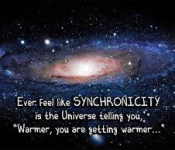Optical Illusions Show How We See
Friday Video: TED Talk – Beau Lotto is founder of Lottolab, a hybrid art studio and science lab. With glowing, interactive sculpture — and old-fashioned peer-reviewed research—he’s illuminating the mysteries of the brain’s visual system.
Beau Lotto’s color games puzzle your vision, but they also spotlight what you can’t normally see: how your brain works. This fun, first-hand look at your own versatile sense of sight reveals how evolution tints your perception of what’s really out there.
Why you should listen
“Let there be perception,” was evolution’s proclamation, and so it was that all creatures, from honeybees to humans, came to see the world not as it is, but as was most useful. This uncomfortable place–where what an organism’s brain sees diverges from what is actually out there–is what Beau Lotto and his team at Lottolab are exploring through their dazzling art-sci experiments and public illusions. Their Bee Matrix installation, for example, places a live bee in a transparent enclosure where gallerygoers may watch it seek nectar in a virtual meadow of luminous Plexiglas flowers. (Bees, Lotto will tell you, see colors much like we humans do.) The data captured isn’t just discarded, either: it’s put to good use in probing scientific papers, and sometimes in more exhibits.
At their home in London’s Science Museum, the lab holds “synesthetic workshops” where kids and adults make abstract paintings that computers interpret into music, and they host regular Lates–evenings of science, music and “mass experiments.” Lotto is passionate about involving people from all walks of life in research on perception–both as subjects and as fellow researchers. One such program, called “i,scientist,” in fact led to the publication of the first ever peer-reviewed scientific paper written by schoolchildren (“Blackawton Bees,” December 2010). It starts, “Once upon a time …”
These and Lotto’s other conjurings are slowly, charmingly bending the science of perception–and our perceptions of what science can be.
“What others say”
All his work attempts to understand the visual brain as a system defined, not by its essential properties, but by its past ecological interactions with the world. In this view, the brain evolved to see what proved useful to see, to continually redefine normality. British Science Association
[ted id=653]
Video Source: http://www.ted.com/talks/beau_lotto_optical_illusions_show_how_we_see







